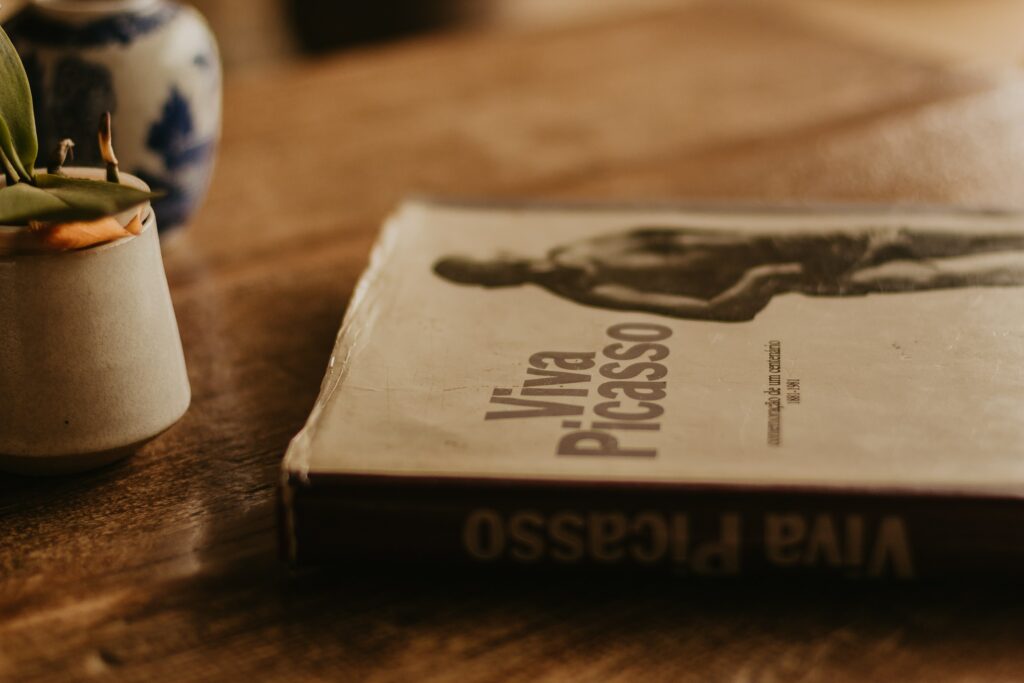The shadow side of greatness
Pablo Picasso. He is one of the most famous artists of the 20th century and is even a household name to people who, like myself, consider themselves complete newcomers to the art world.
Recently, I visited a Picasso exhibition. What struck me most was not any single work of art, but his remarkably prolific output. Researchers have cataloged 26,075 works of art created by Picasso, and some believe the total number is closer to 50,000.
When I discovered that Picasso lived to be 91, I decided to do the math. Picasso lived a total of 33,403 days. With 26,075 published works, that means that Picasso created a new work of art on average every day of his life from the age of 20 until his death at 91. He created something new every day for 71 years.

This incredible output not only contributed significantly to Picasso’s international fame, but also enabled him to amass a huge fortune of around $500 million by the time of his death in 1973. His works became so famous and so numerous that, according to the Art Loss Register, Picasso is the most frequently stolen artist in history, with over 550 missing works.
What made Picasso great was not only the quantity of his art, but also the way he created it. He was a co-founder of the Cubist movement and created the style of collage. He was the artist that his contemporaries copied. Any discussion of the most famous artists in history must include his name.
In love with Picasso
Falling in love with Picasso was a terrible thing.
In his first marriage, he was married to a woman named Olga Khokhlova and they had a child together. They separated after she found out that Picasso was having an affair with a seventeen-year-old girl named Marie-Therese Walter. He was forty-five years old at the time.
Picasso fathered a child with Walter, but moved on to other lovers a few years later. In 1944, he began a relationship with an art student named Francoise Gilot. She was 23 years old. Picasso had just turned 63 at the time.
Gilot and Picasso had two children together, but their relationship ended when Picasso began another affair, this time with a woman 43 years his junior. After their breakup, Gilot published a book called Life with Picasso, which revealed his long list of sexual affairs and sold over a million copies. In revenge, Picasso refused to ever see the two children they shared again.
Basically, Picasso’s love life was a revolving door of affairs and infidelities. In the words of our guide at the Picasso exhibition, “There were always many others.” There must have been something intoxicating about Picasso, because after his death, not one but two of his lovers committed suicide out of grief.
The shadow side
Many of the qualities that make people great also have downsides. Picasso’s exclusive focus on art meant that everything else in life had to take a back seat, including his relationships and his children.
Most people have one main relationship with their lover and maintain a variety of hobbies and interests at different stages. For Picasso, it was the other way around. His main relationship was with his art, while his mistresses were like hobbies and fleeting interests, things he experimented with for a time here and there.
Some scholars believe that Picasso’s numerous relationships were crucial to the development of his art. According to art critic Arthur Danto, “Picasso invented a new style every time he fell in love with a new woman.”
This was the downside of his strength as an artist. The qualities that made Picasso one of the greatest artists of all time may also have made him a terrible life partner. They are like two sides of the same coin. You can’t have one without the other.
Shadows appear in all areas
I don’t want to pick on Picasso here. The idea that strengths involve tradeoffs, especially extreme versions of strengths, applies to almost all fields.
Take Floyd Mayweather Jr. for example. He is widely regarded as one of the greatest boxers of all time. His career record is 49-0, earning more than $1.3 billion over the course of his career.
He also has serious anger management issues. In 2002, he was charged with two counts of domestic violence. In 2004, he was charged twice with minor assault against different women. In 2005, he was again charged with assault. In 2010, another assault charge. Not to mention a number of charges that were later dropped.
The qualities that make him a unique boxer – his unbridled anger and lack of impulse control – also lead him to become violent in normal situations. This combination makes him unbeatable in the ring and unbearable in the rest of life.
Every strength has a trade-off
You may be thinking, “You don’t have to cheat on your spouse to make great art, or beat up others to become a good boxer. Those are two different things.”
You’re right about that. I use extreme examples here to make the point, but it remains true that every strength has a shadow side. Some shadow sides are darker than others, but all paths to success come at a cost.
Perhaps you are a doctor or nurse who has learned to detach yourself from the feelings of death. This trait allows you to do your job well when patients are dying every day, but it also diminishes the compassion and connection you feel with friends and family.
Perhaps you are a scientist who has the highest expectations of yourself. This perfectionism makes you an excellent laboratory professional, but it also leads you to treat your children with strict love and raise them to believe that nothing they do is ever good enough.
You may be a smart and enthusiastic friend who wants to help others by always adding value. You’re just trying to be helpful, but you end up offering too much of value. Your friends want you to just listen to their problems and not feel the need to put your stamp on everything.
There are endless ways this can play out, but a single punchline is that all strength comes with compromise.
Is success worth the downside?
Success is complicated. We love to praise people for becoming famous, for winning championships and making lots of money, but we rarely talk about the cost of success.
Did the beauty of Picasso’s art bring more joy to the world than the pain he caused through a series of broken relationships? For you and me, it’s easy to believe that his contribution was positive because we didn’t have to endure the pain. His ex-wives and lovers may see it differently – especially the two who committed suicide.
The fact that you can’t escape the downside of your strengths brings us to an interesting decision point. People often talk about the success they seek in life, but as author Mark Manson writes in his popular book The Subtle Art of Not Giving a F*ck, the most important question to ask yourself is not, “What kind of success do I want?” but rather, “What kind of pain do I want?”
Do you want the shadow that comes with success? Do you want the baggage that comes with wealth? What kind of pain are you willing to endure to achieve what you want to achieve? Answering this question honestly often leads to more insight about what is really important to you than thinking about your dreams and desires.
It’s easy to want financial independence or boss approval or to look good in front of the mirror. Everyone wants those things. But do you want the downsides that come with them? Do you want to spend two more hours at work every day than you do with your kids? Do you want to put your career ahead of your marriage? Do you want to get up early and go to the gym when you feel like sleeping in? Everyone has different answers, and you need to decide what’s best for you, but pretending the shadow doesn’t exist is not a good strategy.
Success in one area is often associated with failure in another, especially at the extreme end of the performance scale. The more extreme the greatness, the longer the shadow it casts.
Success in one area is often associated with failure in another, especially at the extreme end of the performance scale. The more extreme the size, the longer the shadow it casts.
In other words, the more one-dimensional your focus, the more other areas of life suffer. This is the theory of the four burners in action. The more you turn up one burner, the more you risk burning out others. The things that make people great in one area often make them miserable in others.
A great story and a advice by Icehrm.com. Visit us for the best digital HR platform .







